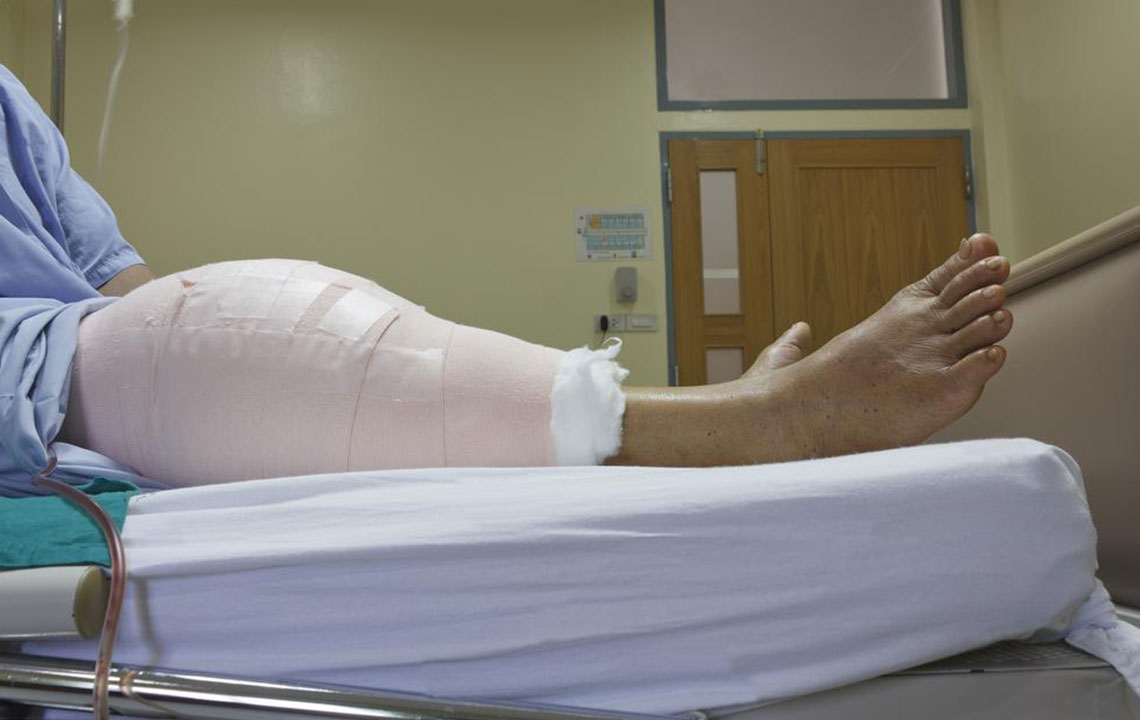What You Need To Know About Knee Replacement Surgery
The basic procedure before starting any surgery is the first step. Your vital signs will be checked to make sure that your body temperature, blood pressure, heart rate, oxygenation levels, and other vital signs are normal. If there is a dysfunction in any of your vital signs, the surgery will not be performed until it has been rectified. With the vital signs all good, the doctor has the green light to proceed with the surgery.

The second most important step involves administering anesthesia to the patient. You will be given general anesthesia, where you will be in a deep sleep, or regional anesthesia, where the sensation to feel is blocked from below your below your waist.
The knee that is to be operated is marked. The surgeon will first make an incision that is around 8 to 10 inches long in the center of your knee. After this line, he will cut through the deeper tissues like the quadriceps and tendons. The kneecap is then flipped over so that the tibia and femur are accessible.
The knee is then bent at a 90-degree angle, to allow the surgeon easier access to the joint that needs to be operated. The arthritically injured or damaged areas are removed with the help of a bone saw. Based on the make of the new prosthesis, the femur, as well as the top of the tibia, are reshaped so that they fit the prosthesis just right. Computer assistance or metal jigs are used to make sure this is done precisely and accurately.
The kneecap or patella is then flipped back in place, and an implant is added. This implant is made of polyethylene. This will help aid in easy movement and gliding of the patella or kneecap against the newly replaced joint. In some cases, a few components are attached along with the tibia and femur as well. In most cases, cemented components are used, but this depends on each and the requirement of the patient’s kneecap as well.
The new tibia surfaces are well cushioned with a cushion made of polyethylene. This acts as a buffer or shock absorber and is placed between the two prosthetic surfaces. It prevents any damage that might occur. After this, the leg is extended and flexed slowly. This is done to make sure the attachments are in place and fit perfectly. Also, the doctor has to make sure that the motion and movements of the knee are fine. The knee is placed in a straight line parallel to the floor, and the components, bone, and cement are left to bond and set in place. Bone cement sets fast, so this takes close to ten minutes at the most. Lastly, the deep tissues that were cut through will be treated and stitched, as well as the incision on the skin.
Care Post Surgery
Taking care of your knee after the surgery is extremely important. This will help with the healing process, aiding in fast recovery as well. Neglecting your knee after the surgery can have bad consequences, so keep these things in mind once you’re done with the surgery.
Make sure you take your medication consistently. Taking the prescribed medications regularly and on time will ensure that the road to recovery is smooth. Ask your doctor what the different medications are meant for, be aware of any side effects that come along with it as well as any warnings. You should make sure you are not allergic to any of the medication.
Pain, dizziness, and nausea are common after you’ve had a knee surgery. The doctor will give you painkillers and tablets for this, and if he hasn’t, ask him for it.
Make sure you take good care of the operated knee. An incision has been made on your knee, so you need to keep a tab on this wound. You need to keep this area dry for a while, preferably until the staples and pins are removed.
Exercising during this period as well as later is extremely important. Your knee has to get accustomed to basic activity, so practice a few easy exercises. However, do this under the proper guidance of your doctor and physiotherapist. If you find yourself in any distress while exercising, stop immediately and continue only after your doctor asks you to do so. Be careful with your movements. The last thing you need is a fall and more injury. Avoid strenuous activity until your knee is completely healed.
Eat foods that are rich in protein and calcium. Eat healthily and indulge in seafood as well. Fishes that are rich in omega-3 fatty acids are great for you. Take a look at knee replacement surgery videos that are available online. Talk to your doctor before you go ahead with the surgery.

